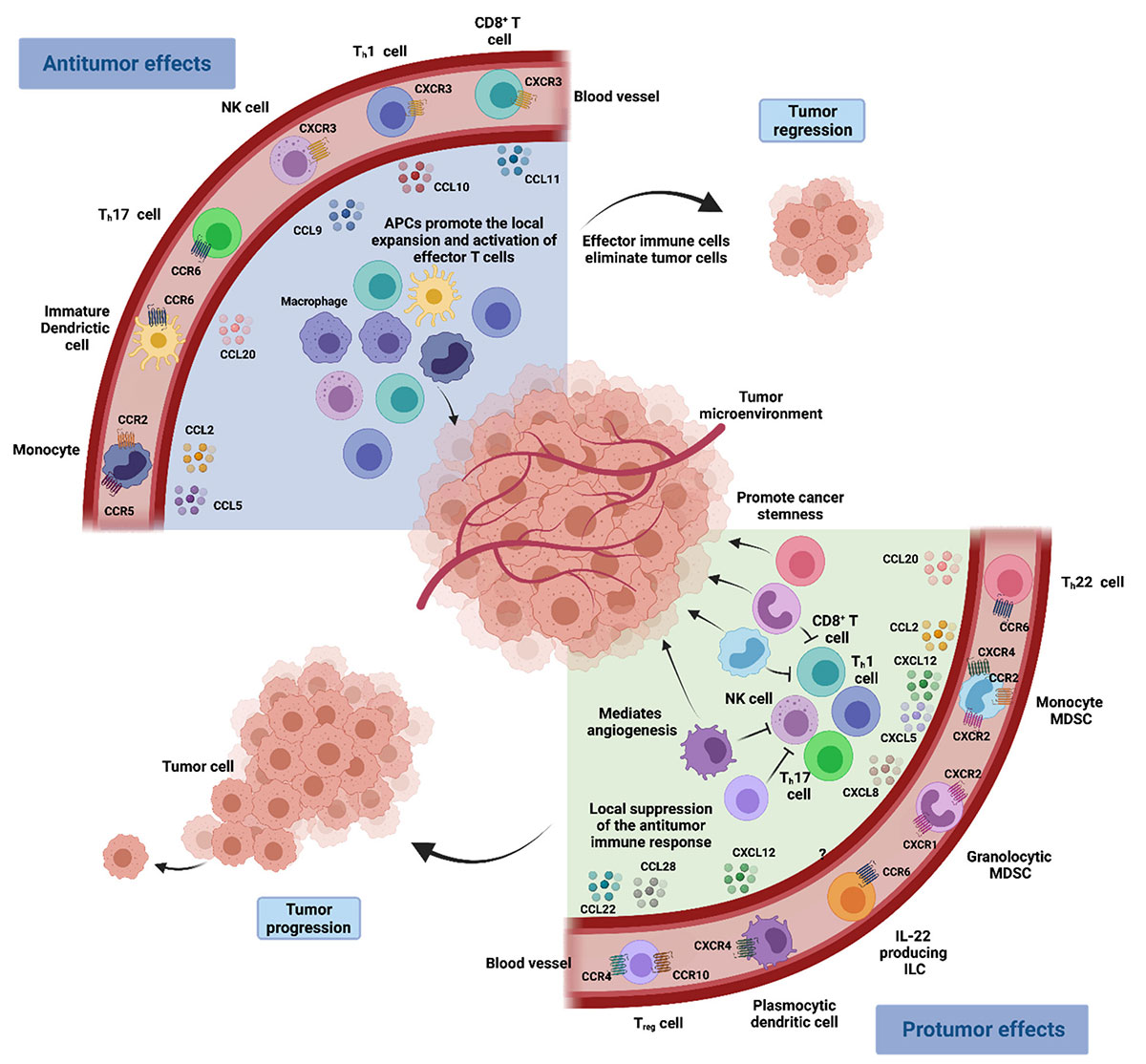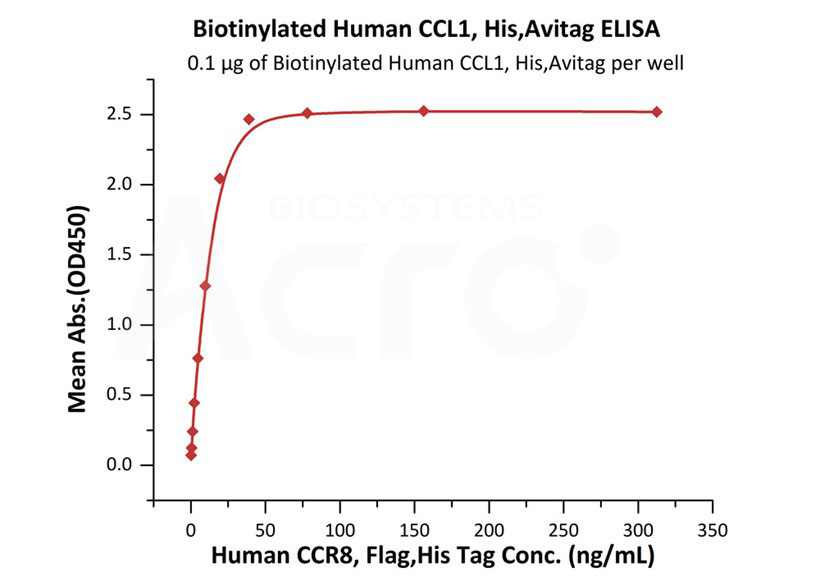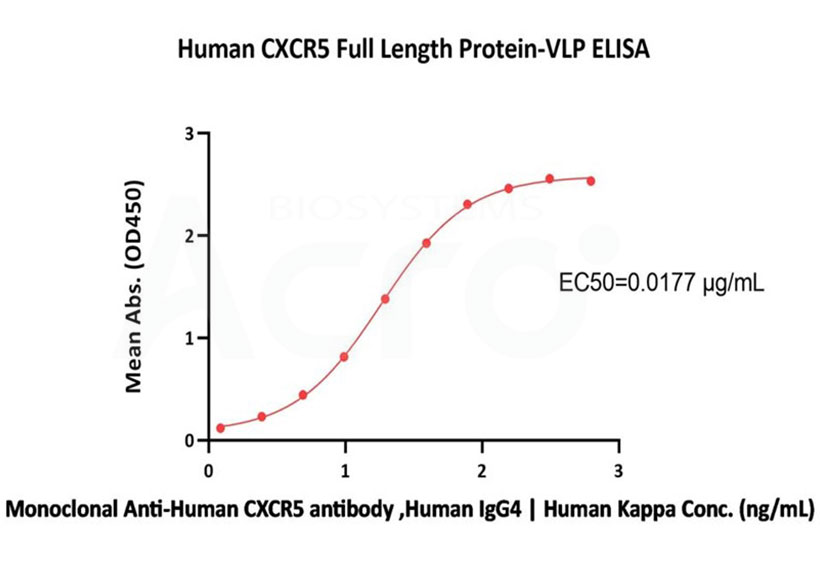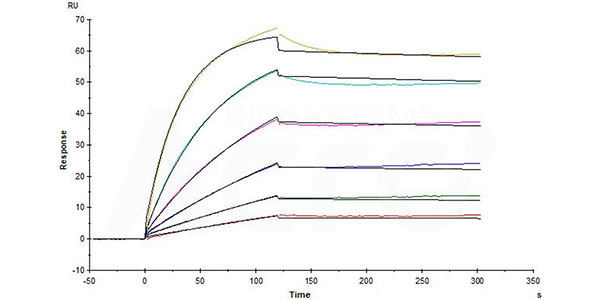 Limited Edition Golden Llama is here! Check out how you can get one.
Limited Edition Golden Llama is here! Check out how you can get one.  Limited Edition Golden Llama is here! Check out how you can get one.
Limited Edition Golden Llama is here! Check out how you can get one.
 Offering SPR-BLI Services - Proteins provided for free!
Offering SPR-BLI Services - Proteins provided for free! Get your ComboX free sample to test now!
Get your ComboX free sample to test now!
 Time Limited Offer: Welcome Gift for New Customers !
Time Limited Offer: Welcome Gift for New Customers !  Shipping Price Reduction for EU Regions
Shipping Price Reduction for EU Regions
> Proteine aus der Familie der Chemokine

Chemokine network in the tumoral microenvironment immune response
Chemokine sind kleine Zytokine oder Signalproteine, die von Zellen ausgeschieden werden. Je nach Anzahl und Anordnung der konservierten L-Cysteine (C) am N-Terminus lassen sich die Chemokine in vier Klassen einteilen: C, CC, CXC und CX3C. Diese Chemokine geben Signale über den Sieben-Pass-Transmembran-Chemokinrezeptor der G-Protein-Kopplung auf der Zelloberfläche, was die zellgerichtete Migration stimuliert. Homöostatische Chemokine werden unter physiologischen Bedingungen konstitutiv exprimiert und spielen eine Rolle bei der Zellmigration und -ansiedlung, während entzündliche Chemokine an Entzündungsherden rasch ausgeschüttet werden und dadurch Effektorzellen in entzündetes Gewebe rekrutieren. Somit spielen Chemokine eine zentrale Rolle bei der Entwicklung und Homöostase des Immunsystems und sind an der Förderung der Aktivierung, Differenzierung, Proliferation und Apoptose von Immunzellen sowie an allen schützenden oder zerstörerischen Immun- und Entzündungsreaktionen beteiligt.
Darüber hinaus spielen auch die Chemokin-Signalübertragung und die Chemotaxis verschiedener Zellpopulationen eine zentrale Rolle in der Tumormikroumgebung (TME). Im TME werden viele Chemokine von Immunzellen, Tumorzellen und Tumor-assoziierten Zellen freigesetzt. Diese Chemokine können sich zeitlich und räumlich verändern und ziehen verschiedene Arten von tumorfördernden und tumorbekämpfenden Immunzellen an. Die Migration von Immunzellen wird das Fortschreiten und die Metastasierung von Tumoren weiter beeinflussen und sich direkt auf die Immunantwort auswirken. Studien haben gezeigt, dass Chemokine pleiotrope Funktionen haben, die sich auf die Anti-Tumor-Immunantwort und die Tumorprogression auswirken. Vor diesem Hintergrund wurden in den letzten zehn Jahren therapeutische Strategien entwickelt, die Chemokine nutzen oder auf sie abzielen, was dazu geführt hat, dass viele neue Arzneimittelkandidaten in klinischen Studien getestet werden. Bei chemokinbasierten Therapien binden die Chemokine in hohem Maße redundant an die Rezeptoren, d. h. derselbe Rezeptor kann an verschiedene Chemokine binden und umgekehrt. Daher kann die therapeutische Wirkung nur dann gesundheitsfördernd und länger anhalten sein, wenn eine gleichzeitige Hemmung eines Chemokins und seines Rezeptors mit der gleichen physiologischen Funktion geschieht.
ACROBiosystems hat eine Reihe von Chemokinproteinen der CC-, CXC- und CX3C-Unterfamilie entwickelt, die von HEK293 exprimiert werden. Die Produkte sind in einer Vielzahl von Arten und Labels erhältlich. Darüber hinaus haben wir auf der Grundlage der "FLAG"-Technologieplattform Chemokinrezeptoren in voller Länge entwickelt, z. B. CCR5, CCR8, CXCR3, CXCR4, CXCR5, CXCR6 usw., deren hohe biologische Aktivität durch die Bindung an einen Antikörper nachgewiesen wurde. Unsere rekombinanten Proteine der Chemokin-Familie können Ihre wissenschaftlichen Forschungs- und Arzneimittelentwicklungsprogramme beschleunigen.
![]() Verschiedene Moleküle, Arten und Markierungen
Verschiedene Moleküle, Arten und Markierungen
![]() Hohe Reinheit, bestätigt durch SDS-PAGE
Hohe Reinheit, bestätigt durch SDS-PAGE
![]() Hohe strukturelle Homogenität, bestätigt durch SEC-MALS und DLS
Hohe strukturelle Homogenität, bestätigt durch SEC-MALS und DLS
![]() Hohe Aktivität, bestätigt durch ELISA/SPR
Hohe Aktivität, bestätigt durch ELISA/SPR
![]() Äußerst stabil und praktisch für Lagerung und Transport
Äußerst stabil und praktisch für Lagerung und Transport
| Molecule | Cat. No. | Species | Product Description | Preorder/Order |
|---|---|---|---|---|
| CCL1 | CC1-H82E9 | Human | Biotinylated Human CCL1 / I-309 / C-C motif chemokine 1 Protein, His,Avitag™ (MALS verified) | |
| CC1-H5254 | Human | Human CCL1 / I-309 Protein, Fc Tag (MALS verified) | ||
| CCL2 | CC2-H5255 | Human | Human CCL2 / MCP-1 Protein, Fc Tag (MALS verified) | |
| CCL3 | CC3-H5249 | Human | Human CCL3 / MIP-1 alpha Protein, His Tag | |
| CCL5 | CC5-H5251 | Human | Human CCL5/RANTES Protein, Fc Tag (MALS verified) | |
| CCL7 | CC7-H52H6 | Human | Human CCL7 / MCP-3 Protein, His Tag | |
| CCL14 | CC4-H5249 | Human | Human CCL14 / HCC-1 Protein, His Tag | |
| CCL17 | CC7-H5256 | Human | Human CCL17 / TARC Protein, Fc Tag (MALS verified) | |
| CCL22 | CC2-H5257 | Human | Human CCL22 / MDC Protein, Fc Tag | |
| CCL24 | CC4-H52H1 | Human | Human CCL24/Eotaxin-2 Protein, His Tag | |
| CXCL1 | CX1-H5253 | Human | Human CXCL1 Protein, Fc Tag | |
| CXCL4 | CX4-H52H9 | Human | Human CXCL4 / PF4 Protein, His Tag | |
| CXCL10 | CX0-H51H1 | Human | Human CXCL10 / IP-10 Protein, His Tag | |
| CXCL13 | CX3-H1249 | Human | Human CXCL13 / BCA-1 Protein, His Tag | |
| CXCL16 | CX6-H5254 | Human | Human CXCL16 Protein, Fc Tag | |
| CX3CL1 | CX1-H5221 | Human | Human CX3CL1 / Fractalkine Protein, His Tag | |
| CX1-H8221 | Human | Biotinylated Human CX3CL1 Protein, His Tag, ultra sensitivity (primary amine labeling) | ||
| CX1-C5222 | Cynomolgus | Cynomolgus CX3CL1 / Fractalkine Protein, His Tag | ||
| CXCR3 | CX3-H52P4 | Human | Human CXCR3 Full Length Protein-VLP | |
| CX3-H52D5 | Human | Human CXCR3 Protein, Flag,His Tag (Detergent) | ||
| CX3-M52P7 | Mouse | Mouse CXCR3 Full Length Protein (VLP) | ||
| CXCR4 | CX4-H5219 | Human | Human CXCR4 / CD184 Full Length Protein-VLP | |
| CX4-H5269 | Human | Human CXCR4 / CD184 Protein, Fc Tag | ||
| CXCR5 | CX5-H52P4 | Human | Human CXCR5 Full Length Protein-VLP | |
| CX5-H52D6 | Human | Human CXCR5 Protein, Flag,His Tag (Detergent) | ||
| CXCR6 | CX6-H52P3 | Human | Human CXCR6 / CD186 Full Length Protein (VLP) | |
| CCR4 | CC4-H52P3 | Human | Human CCR4 Full Length Protein (VLP) | |
| CCR5 | CC5-H52P3 | Human | Human CCR5 Full Length Protein-VLP | |
| CC5-H52P5 | Human | Fluorescent Human CCR5 Full Length Protein (VLP) | ||
| CC5-H52D1 | Human | Human CCR5 Protein, Flag,His Tag (Detergent) | ||
| CCR6 | CC6-H52P3 | Human | Human CCR6 Full Length Protein (VLP) | |
| CCR7 | CC7-H52P3 | Human | Human CCR7 Full Length Protein (VLP) | |
| CCR8 | CC8-H52P4 | Human | Human CCR8 Full Length Protein-VLP | |
| CC8-H52D6 | Human | Human CCR8 Protein, Flag,His Tag&Twin-Strep Tag (Detergent) |

The purity of Human CCL5, Fc Tag (Cat. No. CC5-H5251) is more than 85% and the molecular weight of this protein is around 71-96 kDa verified by SEC-MALS.

The mean peak Radius of VLP (Cat. No. CX3-H52P4) is 60-80 nm with more than 95% intensity as determined by dynamic light scattering (DLS).

Immobilized Biotinylated Human CCL1, His,Avitag (Cat. No. CC1-H82E9) at 1 μg/mL (100 μL/well) on streptavidin (Cat. No. STN-N5116) precoated (0.5 μg/well) plate can bind Human CCR8, Flag,His Tag with a linear range of 0.3-39 ng/mL (QC tested).

Immobilized Human CXCR5 Full Length Protein-VLP (Cat. No. CX5-H52P4) at 5 μg/mL (100 μL/well) can bind Monoclonal Anti-Human CXCR5 antibody, Human IgG4 | Human Kappa with a linear range of 1-78 ng/mL (QC tested).

Anti-CXCR3 antibody immobilized on CM5 Chip can bind Human CXCR3 Full Length Protein-VLP (Cat. No. CX3-H52P4) with an affinity constant of 60.9 nM as determined in a SPR assay (Biacore 8K) (Routinely tested).

Human CCR5, Flag,His Tag (Cat. No. CC5-H52D1) captured on CM5 chip via anti-His antibody can bind Anti-CCR5 antibody (Human IgG1) with an affinity constant of 0.0737 nM as determined in a SPR assay (in presence of DDM and CHS) (Biacore T200).
This web search service is supported by Google Inc.
